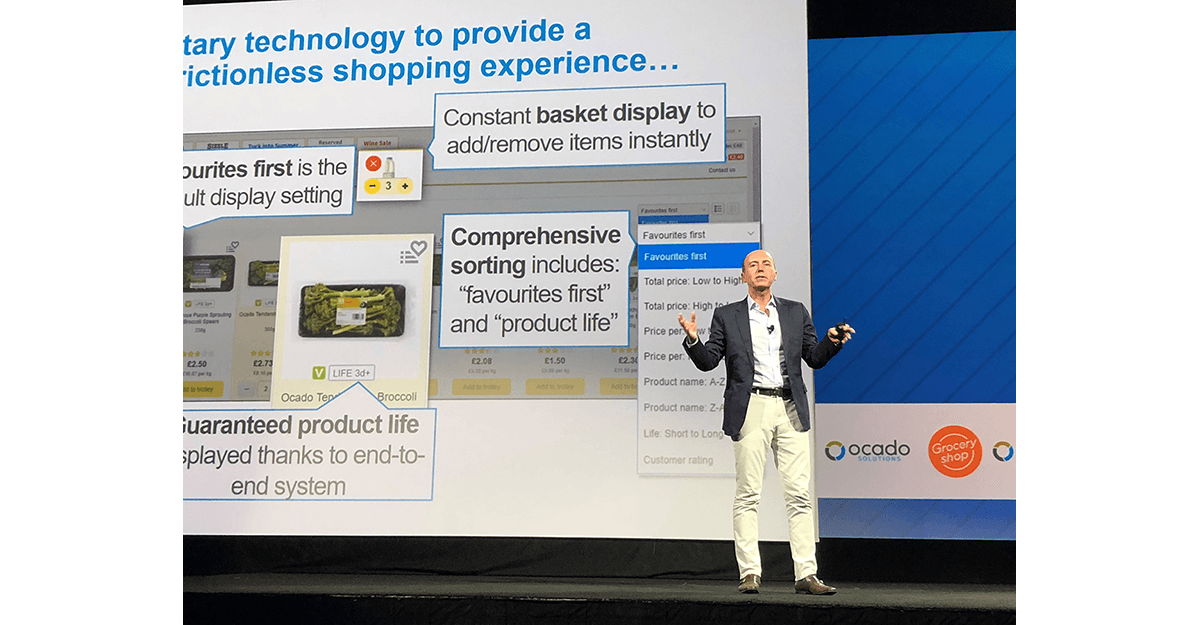LAS VEGAS — Ocado Solutions CEO Luke Jensen challenged stereotypes about online grocery in his keynote address Oct. 30 at new industry event Groceryshop.
The company made news earlier this year for its planned partnership with Kroger, for which it will build a network of e-commerce fulfillment centers designed to dramatically reduce the costs of picking and packing online orders. Jensen mentioned that partnership, but he focused most of his presentation on the success of Ocado as an online-only retailer in the United Kingdom.
Jensen started by telling the crowd that the number one “myth” about online grocery is that no one makes money selling food online.
“Granted, if you’re a grocery and you have 2-3% bottom-line margin and you address online by just creating more costs in your organization, then you’re not going to make money,” Jensen said. “If you’re prepared to rethink end-to-end how you run your business, then you can make money.
“This is exactly what Ocado U.K. has proven — that you can make money even if you’re competing against two of the top five grocers in the world,” Jensen said. “You can be profitable.”
Ocado has achieved profitability by developing and utilizing the same automated fulfillment centers it will soon be building for Kroger. In the U.K., the company also handles delivery in-house, optimizing routes to squeeze the most out of the dollars being invested in that effort. A great website that drives basket build and repeat purchases is also key, Jensen said.
As for other online grocery “myths,” Jensen also argued against the common perceptions that no one buys fresh food online and that online grocery is only for millennials.
He noted that fresh participation is 48% for Ocado U.K., higher than the national average for grocers selling online.
Jensen also pointed out that online grocery, far from only being attractive to millennials, in fact draws one of the most highly coveted shopper groups.
“The highest penetrated group is families,” Jensen said. “Of course I think pretty much everybody in this room knows that what we’re really trying to get to is families.”
He gave examples of how Ocado U.K. has developed its website, from improving the search function — prioritizing in-season, available items that the shopper has bought previously — to creating a calorie saver feature. The latter presents similar products with fewer calories and shows how many minutes one would need to walk or run to burn the difference.
“People love it, and it increases basket size,” Jensen said.
The website also prominently features shopper reviews of specific items as well as for the site in generally.
One plus to the platform is that continually optimizing the shopper experience on a website can be done much faster than in a store, Jensen noted.
“If you run a grocery store, you have been in the business of trying things out, seeing what works, improving as you go,” Jensen said. “The great thing with online is you can do that at an exponential pace versus what you would normally do, and you can use (artificial intelligence) in the process, you can actually build in machine learning in some of the tools you are using to be able to really drive improvement in the site all the time.”













